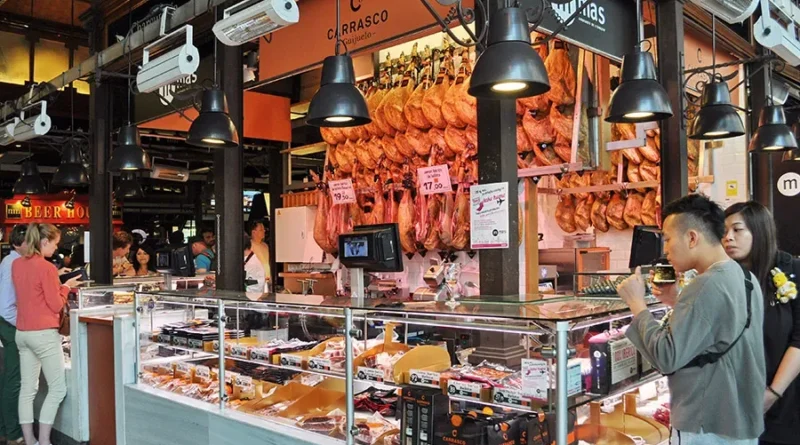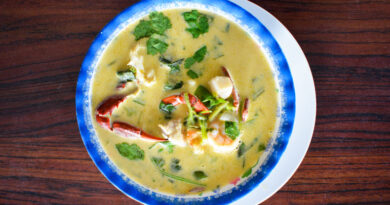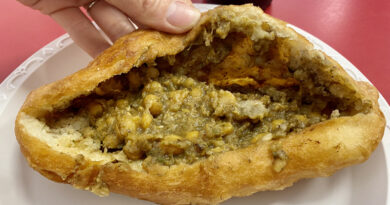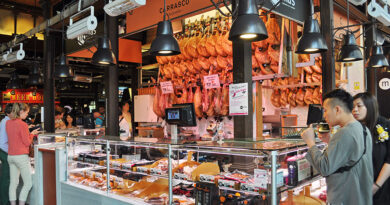The Best Food Markets in Madrid
When it comes to tapas, cañas, and vermú in Spain, there’s one setting that immediately comes to mind: food markets. Food markets in Spain are special—not only places to shop but destinations to grab a snack or sit for a meal. And Madrid has so many of them; different markets in different barrios. While some are regularly flooded with tourists, many of the best food markets are hidden gems tucked among the capital’s labyrinthine streets.
Scan the Internet and it’s likely every reputable “top 5 places to eat in Madrid” piece will include the famous Mercado de San Miguel, an icon of gastronomy and design strategically located in the city’s historic cent er. Inside you’ll find luxurious French and Galician oysters, crispy golden ham croquetas … and thousands of tourists who lunch, snack, and dine there every single day. Even in the lowest of seasons, the Mercado de San Miguel is rarely empty, and you may have to fight your way through the aisles to grab a bite.
We’re not saying you shouldn’t visit Mercado de San Miguel (ideally, just go during off-peak hours). But there are many other fantastic food markets in Madrid that won’t have you in queues for hours, and may just become your new favorite spot. Here are five other essential food markets in Madrid you shouldn’t miss, both to browse and to eat in. Since Madrid’s markets are often incredible places to eat both Spanish food and international cuisines, we’ve recommended some favorite eateries for both.
Mercado de San Fernando
Also known as Mercado Municipal de Embajadores, this (originally supply-oriented) market has been a classic since the 1940s and it’s still going strong. Located in the Lavapiés neighborhood, approximately 10 blocks away from Puerta del Sol, Mercado de San Fernando has a lively atmosphere and a great selection of food stalls offering some of the best traditional Spanish cuisine in Madrid.
You can also find a good variety of local products like Iberian ham, cheeses, and wines from different regions of Spain, as well as a broad offering of international foods such as Cuban, Japanese, Venezuelan, Mexican, and German.
Locals don’t only come here to eat and shop: Mercado de San Fernando boasts a lively cultural scene with regular events like concerts, exhibitions, and workshops. The market’s interior design is noteworthy too, with its high ceilings, colorful tiles, and modernist architecture that transport visitors to a bygone era of Spanish gastronomy.
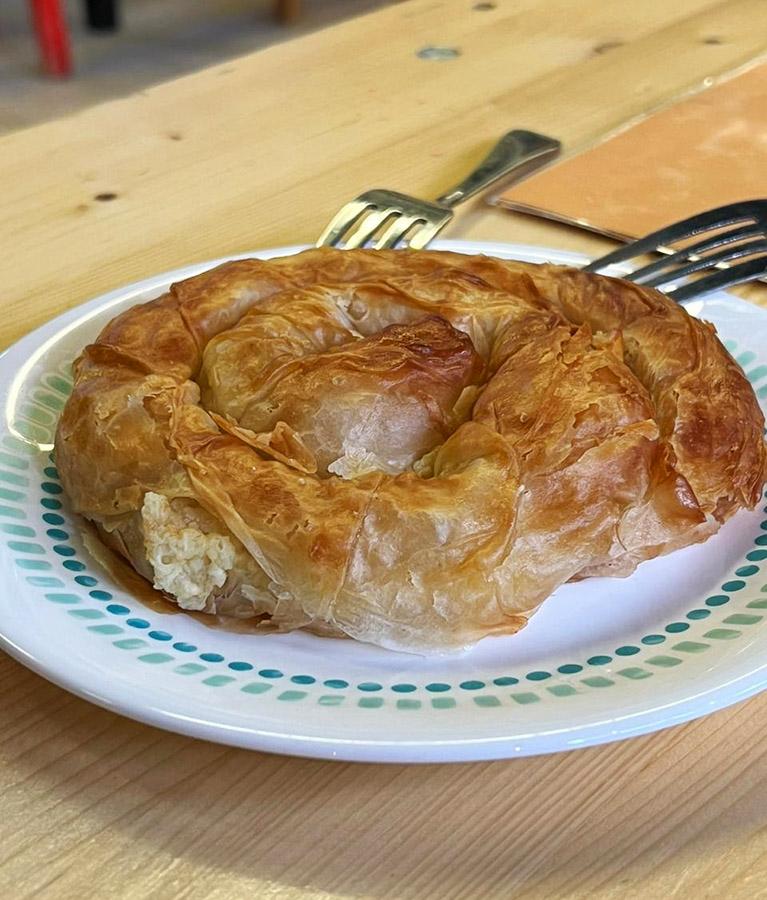
Don’t miss these foods at Mercado de San Fernando:
The traditional Spanish tapas at Bar Mochuelo: This small corner of the market is the place to go if you’re looking for delicious Spanish tapas to warm you up before heading back out into the city. Bar Mochuelo takes pride in offering some of the best toasts (or tostas) loaded with sardines, Iberian ham, and tomato, as well as pollo al ajillo (garlic chicken), rabbit, and the famous caldo gallego. It’s especially great for winter visitors!
Greek cuisine and German beer at Hamburg Exargia: This tavern offers a range of traditional Greek dishes, from moussaka to souvlaki, and European beers, but two items you shouldn’t miss are the spanakopita (spinach and feta cheese pie) and the tiropita (cheese pie). Located at the bottom of the market, Hamburg Exargia a nice quiet place to sit and eat before continuing to explore the market.
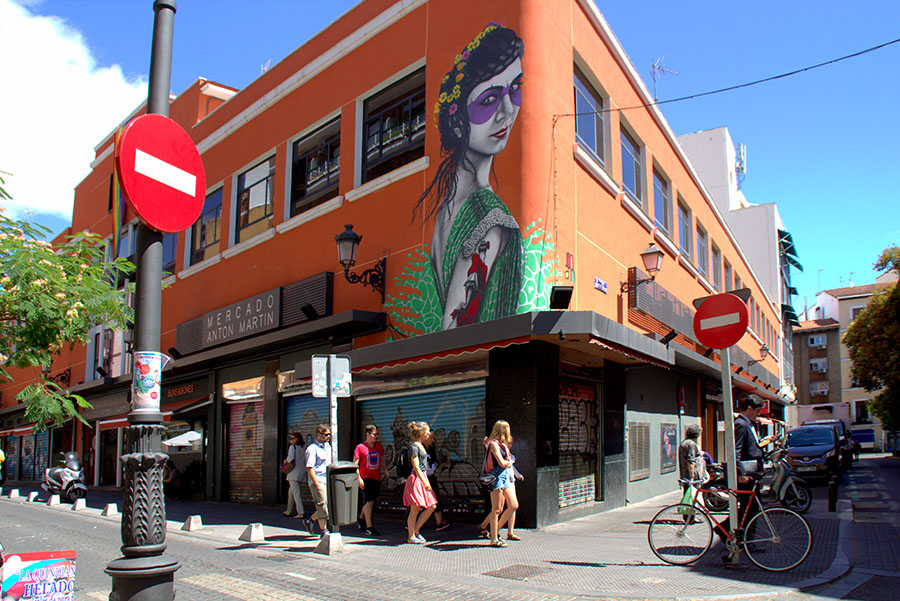
Mercado de Antón Martín
The Mercado de Antón Martín is another classic market located in the city center, just a short walk away from Plaza Mayor, Puerta del Sol, and Plaza de Atocha. It’s located in Plaza Antón Martín (hence its name), and its strategic location means it supplies vibrant neighborhoods such as Barrio de Las Letras and Lavapiés.
The market has three floors; between the first two, there are 65 gastronomic stalls, some only for shopping and others where you can sit and eat. The third floor has been rented since 2002 to the Spanish dance school Amor de Dios, which also makes it a place closely linked to the city’s artistic profile.
Having gone through an economic crisis in the 1980s, like the vast majority of Madrid’s markets, the Mercado de Antón Martín resurged thanks to the area’s population growth and the increasing presence of tourists in the neighboring districts. All of its produce is fresh and high-quality, but the large number of carnicerias, or butcher shops, make it the perfect spot to buy meat.

Don’t miss these foods at Mercado de Antón Martín:
Spanish classics at Caracola: An iconic restaurant with a short but very Spanish menu, Caracola is great spot to get into some tortilla de patatas and tarta de queso, or cheesecake. It combines traditional flavors with original inventions that make it very special. If you’re craving something sweet, one of the creamy, decadent cheesecakes on offer here are an absolute must: From the spectacular original one to cheesecakes made with pistachios, yuzu, Belgian chocolate, and Lotus Biscoff, you won’t know where to start (or where to stop!). Note: You can find Caracola’s brand-new shop located in Chueca (Plaza de Chueca, 4, map), in case you find yourself wandering around other parts in Madrid.

Japanese cuisine at Yokaloka: This Japanese food stall in the heart of the market is said to be one of the best places for sushi in Madrid. Yokaloka is usually crowded, so it’s best to make a reservation if you want to dine in and avoid a long wait. Besides the sushi and sashimi, the ramen is popular, as is the smoked eel flambéed on the spot.
Mercado de Vallehermoso
This market is among the oldest on our list, a classic in the city and essential to its history. The Mercado de Vallehermoso first opened its doors in the Chamberí neighborhood in 1933: It was originally a produce market that, given its large size, was able to serve many people in Madrid. While its wide variety of products could perhaps be found elsewhere, the market was preferred by many, as much could be purchased in a single trip there.
After Spain’s economic crisis of the ’80s, the Mercado de Vallehermoso fell into disrepair and abandonment. But in 2015 it reinvented itself, thanks to a change in management and some government support. Young entrepreneurs were invited in to showcase their businesses, infusing fresh life and original ideas into the market while preserving its traditional spirit. Today, it hosts more than 60 stalls and operates at full capacity. It’s especially known for its superior fresh fish and seafood, as well as its permanent farmers market.

Don’t miss these foods at Mercado de Vallehermoso:
Empanadas gallega at Empanadas de Gloria: Spanish empanadas are somewhat similar to their more widely known Latin American counterparts … there’s flakey dough and there’s a (usually) savory filling. But they’re closer to a pie than a handheld moon-shaped pastry, and definitely a bigger snack. If you’ve never tried them before, Empanadas de Gloria is the place to go.
Straight out of Galicia, Gloria made her way to Madrid to open up her shop and sell some of the best traditional empanadas you’ll find in the city, and she sure knows what she’s doing: Since 2009, the owner has spent her days making these artisanal 10-inch empanadas that weigh almost two pounds and have the most incredible fillings: black pudding with apples, tuna, cod, chorizo and bacon, mussels, chicken, even some sweet flavors. It’s truly a celebration of Northwest Spain in a single stall.
Korean BBQ ribs at Kitchen 154: Kitchen 154 (affectionately known as “El Kitchen” by locals) is one of the best options for spicy Asian fusion fare and fresh beer in Madrid. In the words of its owners, “the market is huge, but the stall isn’t,” so it’s advised to make a reservation to ensure your spot at a table or the bar. If you’ve been craving spice in Madrid, here’s your spot. Some favorite dishes include red curry with prawns, Sichuan eggplants with white rice, and Korean BBQ ribs, served with kimchi—all of which goes perfectly with its original beer, La Virgen. Note: You can also find a Kitchen 154 restaurant in Malasaña, at Calle del Acuerdo, 3 (map).

Mercado de Maravillas
The Mercado de Maravillas is perhaps one of the best-kept secrets in the city. Located further from the tourist center, on the famous Calle de Bravo Murillo, it is the place of choice for locals to stock up their fridges and pantries. This market, which opened its doors in the early 1940s, features dozens of stalls selling high-quality fresh produce across two floors.
At Maravillas, you can find spices, cheese, fish, meat, charcuterie, fruits, vegetables, and even flower and watch shops. Most important for the visitor, there are a few hidden food stalls, including one famous for its saucy tapa de oreja (grilled pig’s ear)—a classic Madrileño dish—and some very good tortilla española for just €2 a slice.
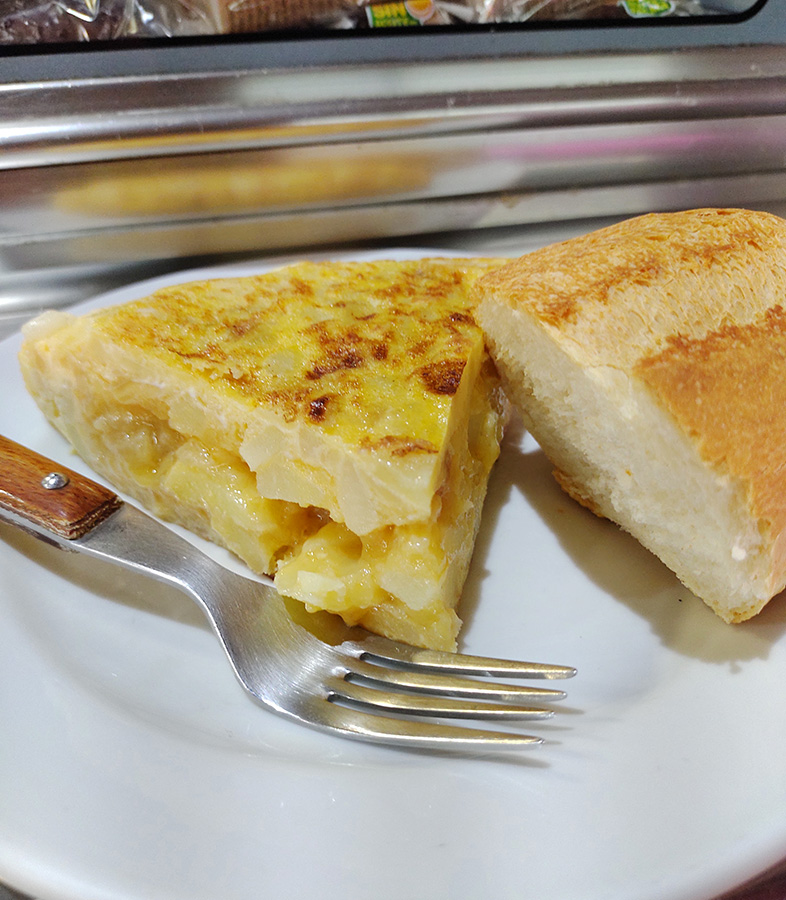
Don’t miss these foods at Mercado de Maravillas:
Spanish tapas at Bar Javi: It is undoubtedly a brilliant idea to open a tapas place in a produce market—who doesn’t get a little peckish while shopping? Bar Javi has historically been known as the place for fried eggs, and that is precisely its specialty: egg-based dishes. Always crowded, it’s the perfect pit stop to enjoy something delicious with or without a drink (this is a bar, after all) before continuing your shop. Definitely try the oreja and the Spanish tortilla, which is served here with a generous piece of bread—not a minor detail, as bread is a separate charge everywhere in Madrid.
Fresh fruits and vegetables: Mercado de Maravillas is the one of the best places to shop for fresh, organic produce, and perhaps take a chance on something you’ve never tried before. There are more than 10 stalls peddling a wide variety of fruits and vegetables, with our favorite being the Japanese stalls with Asian fruits and leafy greens and those dedicated to wild mushrooms, like Frutas Laura, where you can easily find boletus and enoki.

Mercado de La Paz
This is a fancy market comfortably located in the fanciest part of town. The long-standing Mercado de La Paz proudly lives in Salamanca, a luxurious neighborhood of high-fashion brands, gourmet restaurants, and expensive cars. This market first opened its doors in 1879, when it hosted 120 produce stalls that were sufficient to feed nearly the whole city.
The destruction of the Spanish Civil War in the late 1930s prompted the Mercado de La Paz to renovate for the first time during the 1940s. A third renovation took place in the 1980s, giving the market the shape and look it holds today.
Given the high traffic of the area, this market boasts a clean, sleek appearance that makes it seem more elegant than others in the city. During the weekends, when locals and tourists tend to collide while shopping, it gets quite crowded. There are still many different produce stalls to explore, but here is a good place to score fresh, high-quality chicken (and other poultry) and eggs in the so-called pollerias, as well as exotic spices from around the globe.
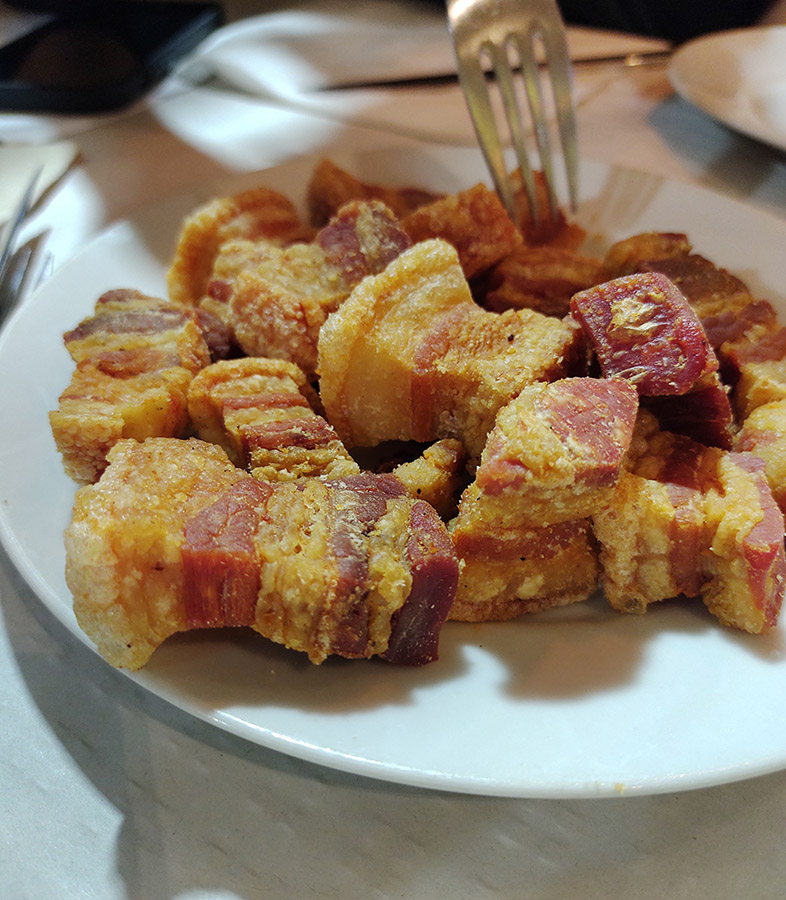
Don’t miss these foods at Mercado de La Paz:
Traditional Spanish food at Casa Dani: Casa Dani—whose stall takes a big portion of the market, allowing for lots of tables—is where foodies run to get a taste of its famous, runny tortilla de patata (aka tortilla española, aka Spanish egg and potato omelet), as it’s won prizes, including one in 2019 for best tortilla in Spain. According to the restaurant, they serve more than 100K tortillas a year, so this is certainly something you can’t miss.
Casa Dani not strictly a traditional-Spanish-foods restaurant, but other iconic dishes on that front are oxtail, served with a wine-based sauce and potatoes, and torreznos, perfectly poppable crispy pork belly bites.
Italian food at Matteo Cucina Italiana: This is a great place not only to eat but also to buy quality Italian products, including dry pasta, canned tomatoes, and various types of preserves. Matteo, its owner and head chef, brought all the secrets of Italy to the heart of Madrid with this restaurant, offering quality pasta dishes using the best ingredients of the market. It’s best to reserve a table if you plan to eat in. Some top dishes are the tonnarelli carbonara, ravioli di zucca with pesto di salvia, and the incredible tiramisu. Pro tip, if you’re staying in an apartment rental: In addition to excellent takeout, Matteo has fresh pasta, assembled uncooked pizzas, and housemade pesto that you can prepare in the comfort of your Spanish kitchen.
About the author: Sabrina Palmieri is an Argentinian journalist currently living in Madrid.

